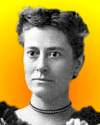
On 15 May 1857, Williamina Paton Fleming was born, the Scottish-American astronomer who progressed from being a maid for Prof. Edward Pickering, to an assistant in clerical and computational work, and to a pioneer in the classification of stellar spectra.
She trained other women to do mathematical calculations, who were known as the Harvard Computers (and sometimes less flatteringly as Pickering's Harem).
This Obituary of Williamina Paton Fleming was written by Annie Jump Cannon, a Harvard Computer, who learned the skills from Fleming, and made significant contributions to the classification of stars in her own right.

On 15 May 1863, Frank Hornby was born, the English inventor and toy manufacturer who patented the Meccano construction set in 1901. He introduced Hornby model trains in 1920, originally clockwork and eventually electrically powered with tracks and scale replicas of associated buildings. The “Dinky” range of miniature cars and other motor vehicles was added in 1933, followed by Scalextric. Today's book pick is: Frank Hornby: The Boy Who Made $1,000,000 with a Toy, by M. P. Gould
It is available from Amazon, typically about New from $19.95. Used from $24.77. (As of earlier time of writing - subject to change.)
 | It can even be thought that radium could become very dangerous in criminal hands, and here the question can be raised whether mankind benefits from knowing the secrets of Nature, whether it is ready to profit from it or whether this knowledge will not be harmful for it. The example of the discoveries of Nobel is characteristic, as powerful explosives have enabled man to do wonderful work. They are also a terrible means of destruction in the hands of great criminals who lead the peoples towards war. I am one of those who believe with Nobel that mankind will derive more good than harm from the new discoveries. |
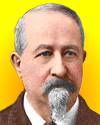 | Each volcano is an independent machine—nay, each vent and monticule is for the time being engaged in its own peculiar business, cooking as it were its special dish, which in due time is to be separately served. We have instances of vents within hailing distance of each other pouring out totally different kinds of lava, neither sympathizing with the other in any discernible manner nor influencing other in any appreciable degree. |
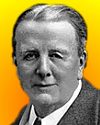 | Even a wise experiment when made by a fool generally leads to a false conclusion, but that fools’ experiments conducted by a genius often prove to be leaps through the dark into great discoveries. |
| Before you look at today's web page, see if you can answer some of these questions about the events that happened on this day. Some of the names are very familiar. Others will likely stump you. Tickle your curiosity with these questions, then check your answers on today's web page. | |
| Births | |
 | A French physical chemist, born 15 May 1859 was a cowinner of the Nobel Prize for Physics in 1903. He and his wife discovered radium and polonium in their investigation of radioactivity. What is the origin of the name of polonium? |
| Deaths | |
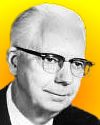 | Robert Morris Page (1903-1992) was an American physicist who was a radio pioneer but also who made outstanding contributions to the work done at the U.S. Naval Research Laboratory in the years prior to World War II. His invention was vital to the Allies during World War II for detecting enemy planes, ships, and other targets. Page continued research after the war in peacetime applications. To what technology did he contribute? |
| Events | |
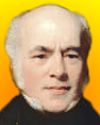 | In 1836, Francis Baily observed “Baily's Beads.” After retiring in 1825 from a successful business career, Baily turned to science. He revised several star catalogs, and repeated Henry Cavendish’s experiments to determine the density of the Earth. What phenomenon is known as Baily's Beads? |
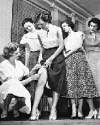 | In 1940, nylon stockings went on sale to the public for the first time in the United States in Wilmington, Delaware, and at stores throughout the U.S. They were an immediate hit. A remarkable number were sold in several hours. (In 1939, nylon stockings had been sold for the first time to employees at DuPont’s Wilmington, Delaware nylon factory.) How many pairs of nylon stocking were sold on the first day of public sale? |
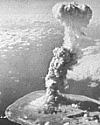 | In 1957, a nation’s first H-bomb was exploded in the air off Christmas Island in the central Pacific Ocean. Which nation exploded its first H-bomb in May 1957? |
Fast answers for the previous newsletter for May 14: the Eightfold Way (after Buddha’s Eightfold Path to Enlightenment and bliss) • adsorption chromatography • William P. Lear • “57 Varieties” • the decade including the year 1856 • Edward Jenner • Vaseline.
 If you enjoy this newsletter, the website, or wish to offer encouragement or ideas, please send feedback by using your mail reader Reply button.
If you enjoy this newsletter, the website, or wish to offer encouragement or ideas, please send feedback by using your mail reader Reply button. Your click on a Facebook, StumbleUpon, or other social button on the site webpages is also a welcome sign of appreciation. Thank you for using them.
© This newsletter is copyright 2020 by todayinsci.com. Please respect the Webmaster's wishes and do not put copies online of the Newsletter — or any Today in Science History webpage. (If you already have done so, please remove them. Thank you.) Offline use in education is encouraged such as a printout on a bulletin board, or projected for classroom viewing. Online, descriptive links to our pages are welcomed, as these will provide a reader with the most recent revisions, additions and/or corrections of a webpage. For any other copyright questions, please contact the Webmaster by using your mail reader Reply button.
--
If you do not want to receive any more newsletters, Unsubscribe
To update your preferences and to unsubscribe visit this link
Executive Real Estate Business Class
-
"It was like a man with wings. It wasn't like anything you'd see on TV or in a monster movie." ...
About the publisher
Search This Blog
Blog Archive
-
▼
2021
(585)
-
▼
May
(62)
- Tonight: Back-to-Back Premieres
- On This Day for May 31 - Adolf Eichmann hanged, Cl...
- Newsletter for Monday 31 May.
- On This Day for May 30 - Joan of Arc burned at the...
- TONIGHT at 8/7c: The Tulsa Race Massacre Revealed
- Newsletter for Sunday 30 May.
- Bundle Up For The Summer!
- On This Day for May 29 - Mount Everest summit reac...
- Newsletter for Saturday 29 May.
- On This Day for May 28 - Amnesty International fou...
- Newsletter for Friday 28 May.
- On This Day for May 27 - Founding of St. Petersbur...
- Newsletter for Thursday 27 May.
- On This Day for May 26 - Martin Luther declared a ...
- Newsletter for Wednesday 26 May.
- On This Day for May 25 - U.S. Constitutional Conve...
- Newsletter for Tuesday 25 May.
- Behind Every Empire There’s a Titan
- On This Day for May 24 - Opening of the Brooklyn B...
- On This Day for May 23 - Tibet annexed by China, C...
- Newsletter for Sunday 23 May.
- The Tulsa Race Massacre, 100 Years Later
- On This Day for May 22 - Roman Emperor Constantine...
- Newsletter for Saturday 22 May.
- On This Day for May 21 - First nonstop solo transa...
- Newsletter for Friday 21 May.
- On This Day for May 20 - U.S. Homestead Act signed...
- Newsletter for Thursday 20 May.
- On This Day for May 19 - Ringling Bros. Circus for...
- Newsletter for Wednesday 19 May.
- Learning This Fun Doesn't Need A Summer Break
- On This Day for May 18 - Eruption of Mount St. Hel...
- Newsletter for Tuesday 18 May.
- On This Day for May 17 - School segregation outlaw...
- Newsletter for Monday 17 May.
- Follow the trail of 400 facts!
- On This Day for May 16 - Warsaw Ghetto Uprising su...
- Newsletter for Sunday 16 May.
- On This Day for May 15 - Edith Cresson appointed F...
- Newsletter for Saturday 15 May.
- On This Day for May 14 - Declaration of Israel's s...
- Newsletter for Friday 14 May.
- On This Day for May 13 - U.S. declaration of war o...
- Newsletter for Thursday 13 May.
- Ridiculous History You Want To Know About!
- On This Day for May 12 - First flight over the Nor...
- Newsletter for Wednesday 12 May.
- On This Day for May 11 - “New Rome” established by...
- Newsletter for Tuesday 11 May.
- On This Day for May 10 - Nelson Mandela inaugurate...
- Newsletter for Monday 10 May.
- On This Day for May 9 - Fourth and final voyage of...
- On This Day for May 7 - Theatre Royal opened, Pyot...
- On This Day for May 5 - Mexican victory in the Bat...
- On This Day for May 4 - Four students shot at Kent...
- On This Day for May 3 - Margaret Thatcher elected ...
- Newsletter for Monday 3 May.
- TONIGHT: The Bin Laden Raid, Revealed
- On This Day for May 2 - Lou Gehrig's 2,130-game st...
- Newsletter for Sunday 2 May.
- On This Day for May 1 - May Day founded, Arthur We...
- Newsletter for Saturday 1 May.
-
▼
May
(62)
-
Blogroll
-
About
HistoryFact










0 comments:
Post a Comment